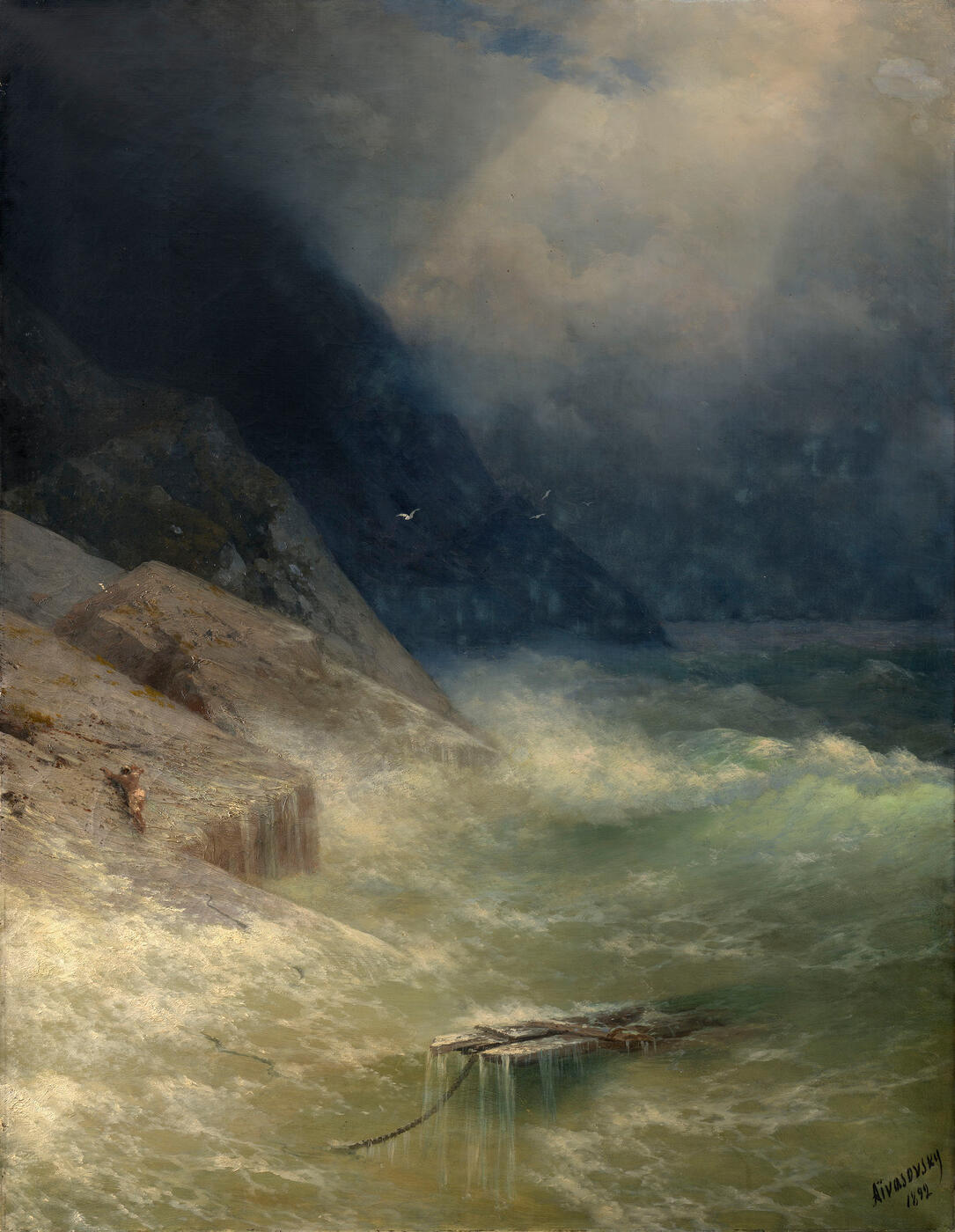8 June 2016 Russian Art and Photography Auctions
8 June 2016

29. AIVAZOVSKY, IVAN (1817-1900)
The Survivor, signed and dated 1892, also further signed, inscribed "New York" and dated on the reverse.
Oil on canvas , 140 by 107 cm.
450,000-600,000 GBP
Provenance: Collection of Ekaterina Tretiakoff, Brussels.
Thence by descent.
Russian Art, Christie’s London, 9 June 2009, lot 18.
Acquired at the above sale by the present owner.
Private collection, UK.
Authenticity of the work has been confirmed by the expert V. Petrov.
Ivan Aivazovsky, the unrivalled master in the depiction of shipwrecks and stormy seas, spent his entire life in search of fresh subjects and motifs that would capture both the majesty and the menace of the elements on his canvasses. Prominent among them is the subject of shipwreck survivors, which first appeared in his work in the 1840s – a theme that would become present in the many leading works of the greatest Russian seascape painter. Painted in 1892, The Survivor is a fine example of the mature artist’s interpretation of the subject.
As characteristic of Aivazovsky, the main protagonist here is the sea – violent and seething, with its waves receding from the wet coastal rocks, its transparent colour constantly changing in the enchanting moonlight that seems to stream from nowhere. What only remains from this recent tragedy is a fragment of the ship drifting towards the massive rock in the foreground, and the solitary figure of a man, summoning with his last reserves of strength to scramble onto the shore. The man is not only the narrative focus of the picture; he is also the centre of its colour scheme. The moonlight glosses over him, accentuating the warmth and vibrancy of his skin, subtly blending in with the texture of the huge stone, the light-greenish hue of the waves streaming back from the shore, and even with the cold, leaden, dark blue sky. Using these “expressive” details, lighting effects, as well as seagulls sweeping over the waves, Aivazovsky manages to create an image replete with drama and romantic pathos. The picture is not only emotionally charged but also displays true artistry.
It was, after all, Aivazovsky’s visual memory, enhanced by his vivid, creative imagination that enabled him to eschew realistic precision and recreate in his pictures the varying moods of nature that he had seen in the past. Aivazovsky acknowledged that “Inspired by the sight of picturesque surroundings, in the presence of spectacular light or some moment in a storm, I retain the memories of them for many years...”
The pivotal idea in Aivazovsky’s artistic disposition is that of the boundlessness of nature and its immense power. Aivazovsky’s late work becomes increasingly allegorical, and the might and power of nature are contrasted with the weakness and vulnerability of human life. Light takes on a special conceptual significance. Whenever he paints clouds, water or the sky, in effect he is painting light. For Aivazovsky, light is a symbol of life, hope and faith – a symbol of the eternal. It is purely and simply the idea of light as the creator, reinterpreted in his own particular way, and this was the reason why in the 1890s the artist turns to the topic of the “Birth of Light”.
In the painting offered for sale, as in many other works from the same period, light seems to beam down from some invisible source (Among the Waves, The Maria). Accordingly, after meeting with Aivazovsky in Novy Nakhichevan, Martiros Saryan identified the artist’s main principle: “No matter how terrible the storm that we have seen in one of his pictures, at the top of the canvas there will always be a ray of light breaking through the mass of forbidding clouds; it may be tenuous and faint, yet it is the herald of salvation... It is this, the Light, that forms the meaning of all the storms that the artist has painted.” The artist remained true to this principle throughout his life, and The Survivor is the finest declaration of that.
Notes on symbols:
* Indicates 5% Import Duty Charge applies.
Ω Indicates 20% Import Duty Charge applies.
§ Indicates Artist's Resale Right applies.
† Indicates Standard VAT scheme applies, and the rate of 20% VAT will be charged on both hammer price and premium.